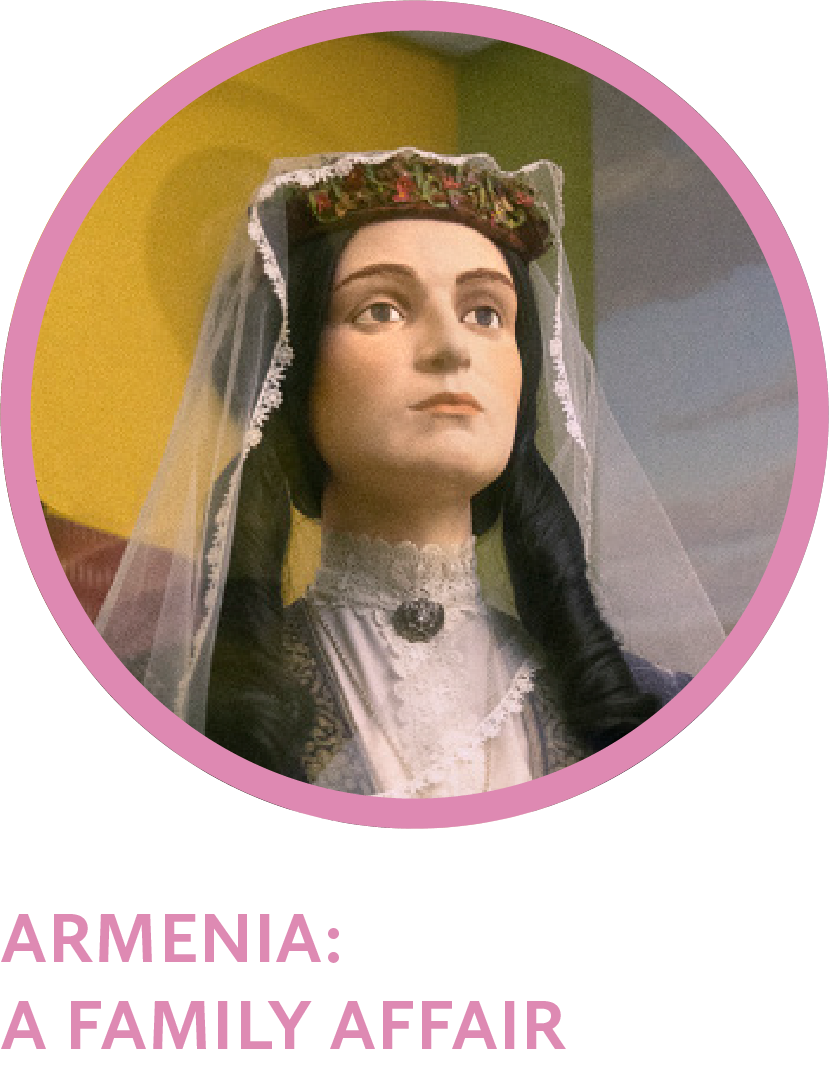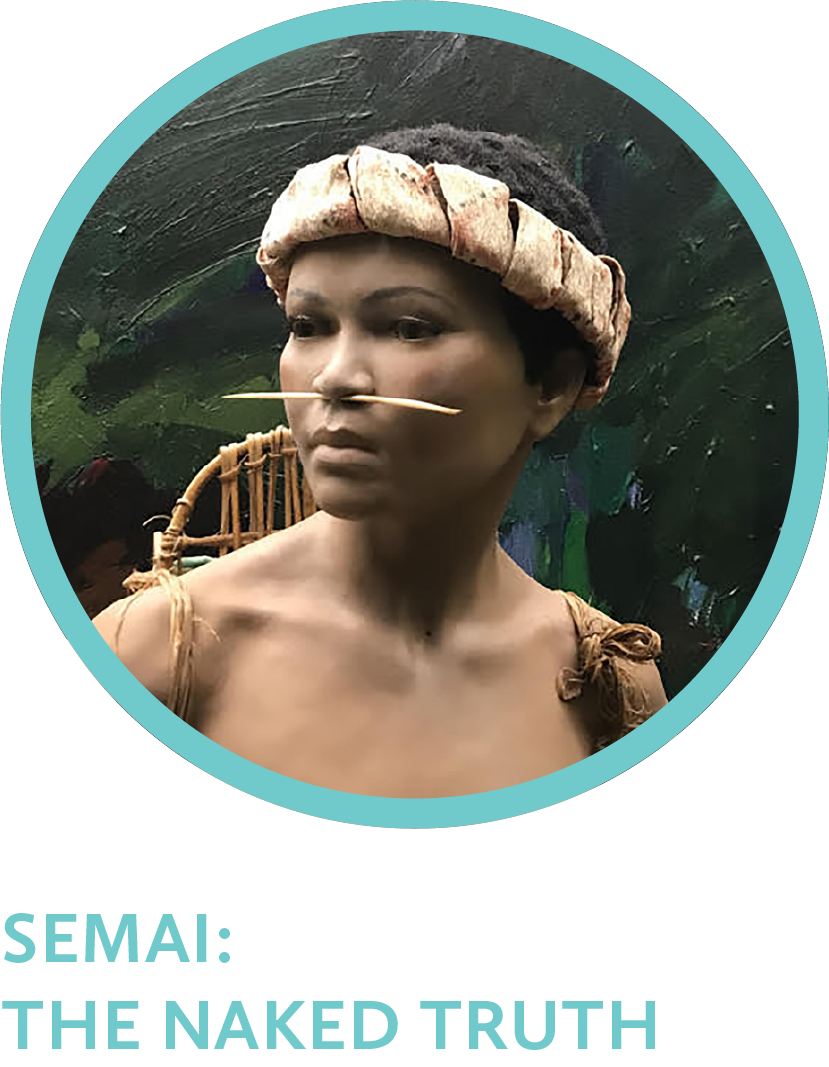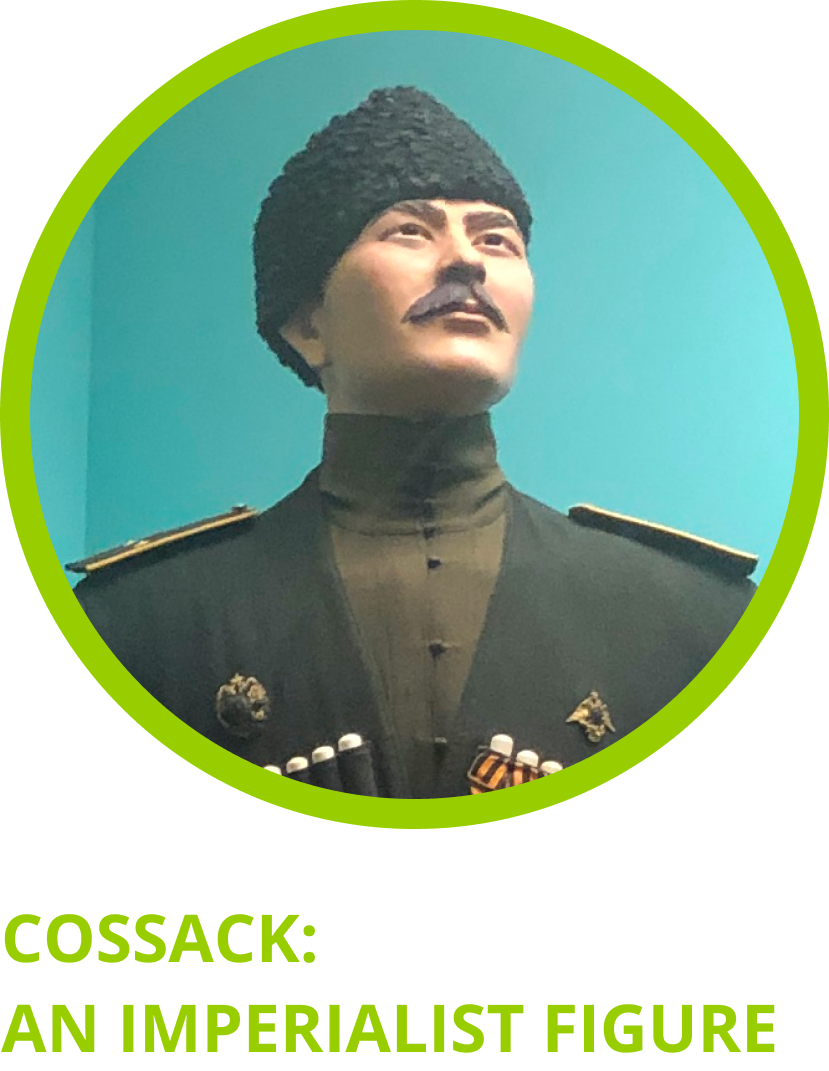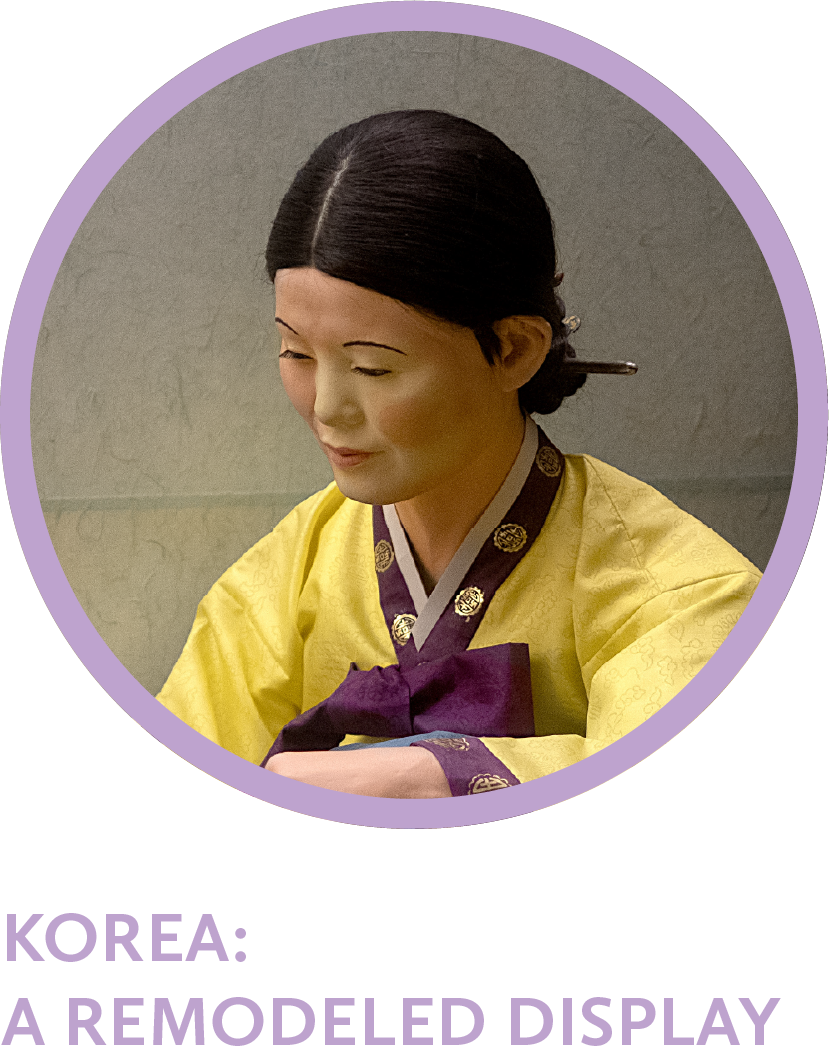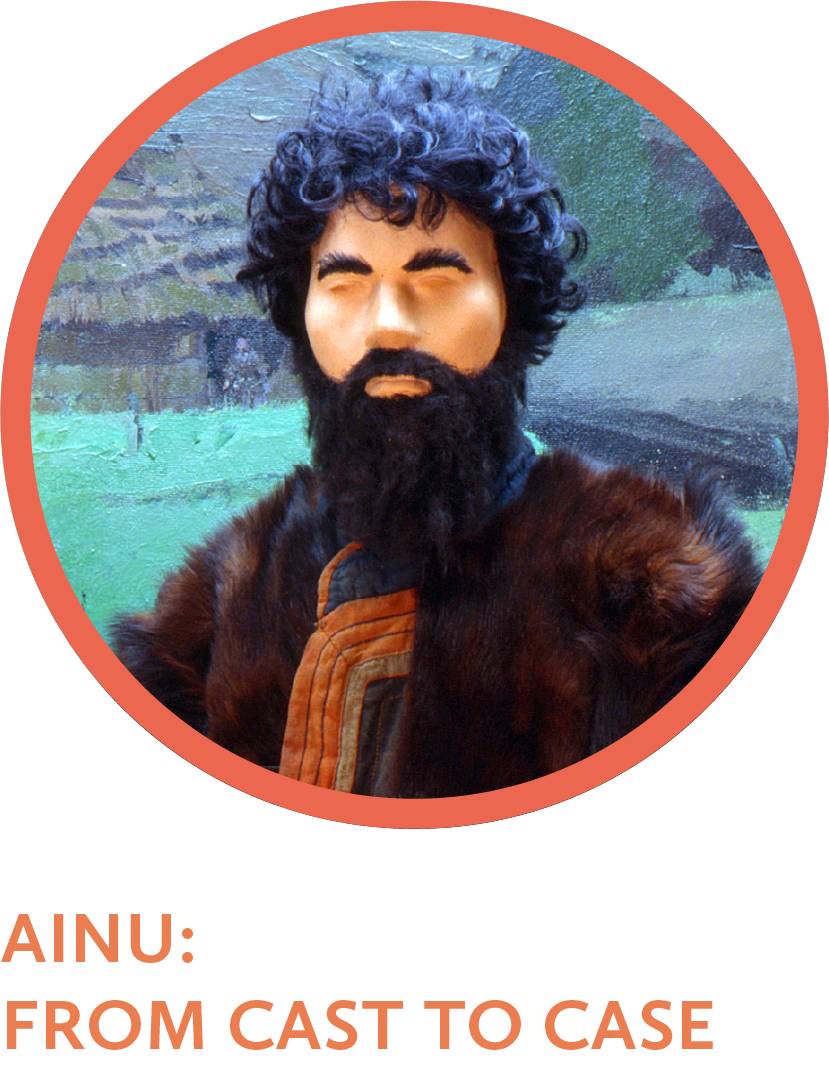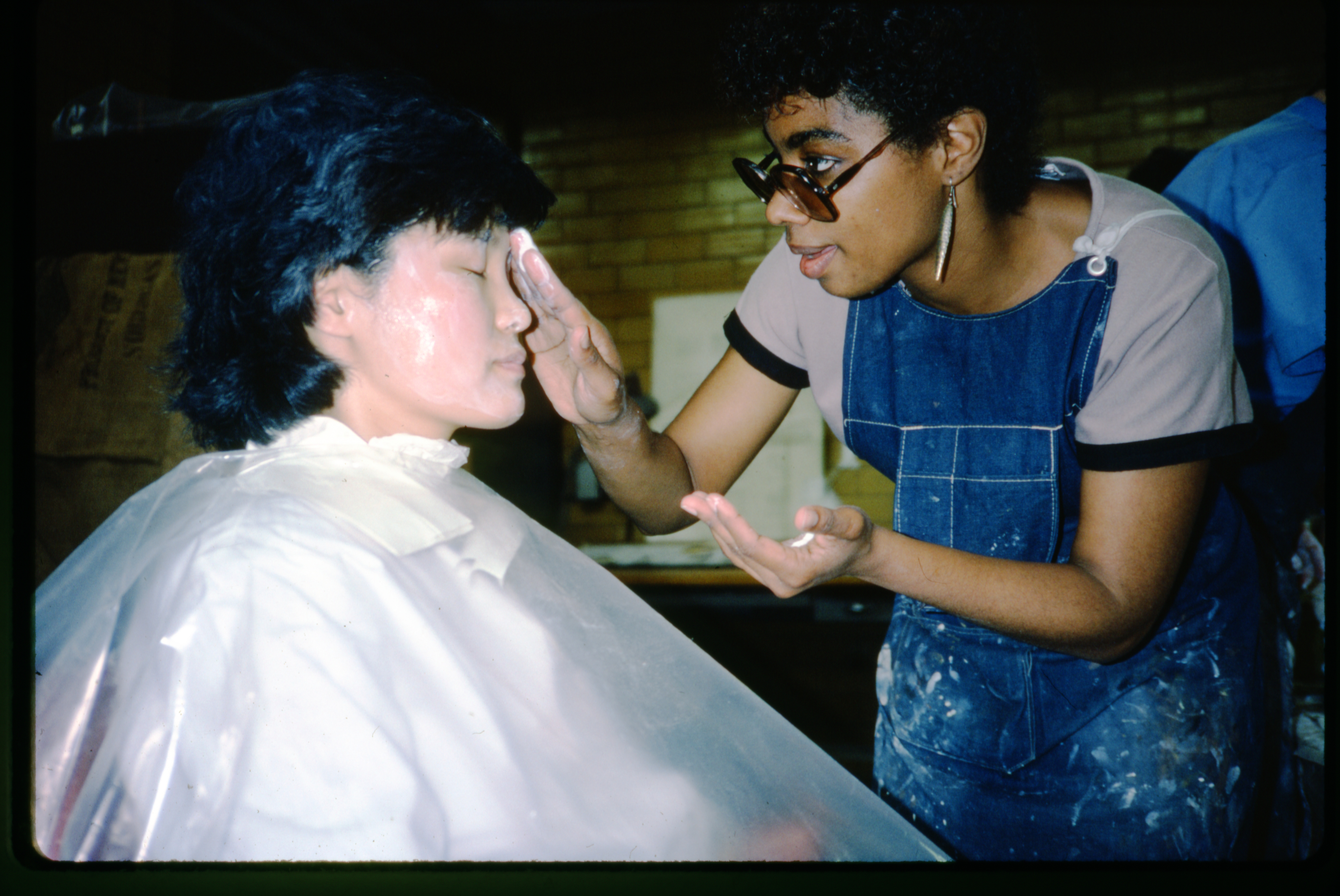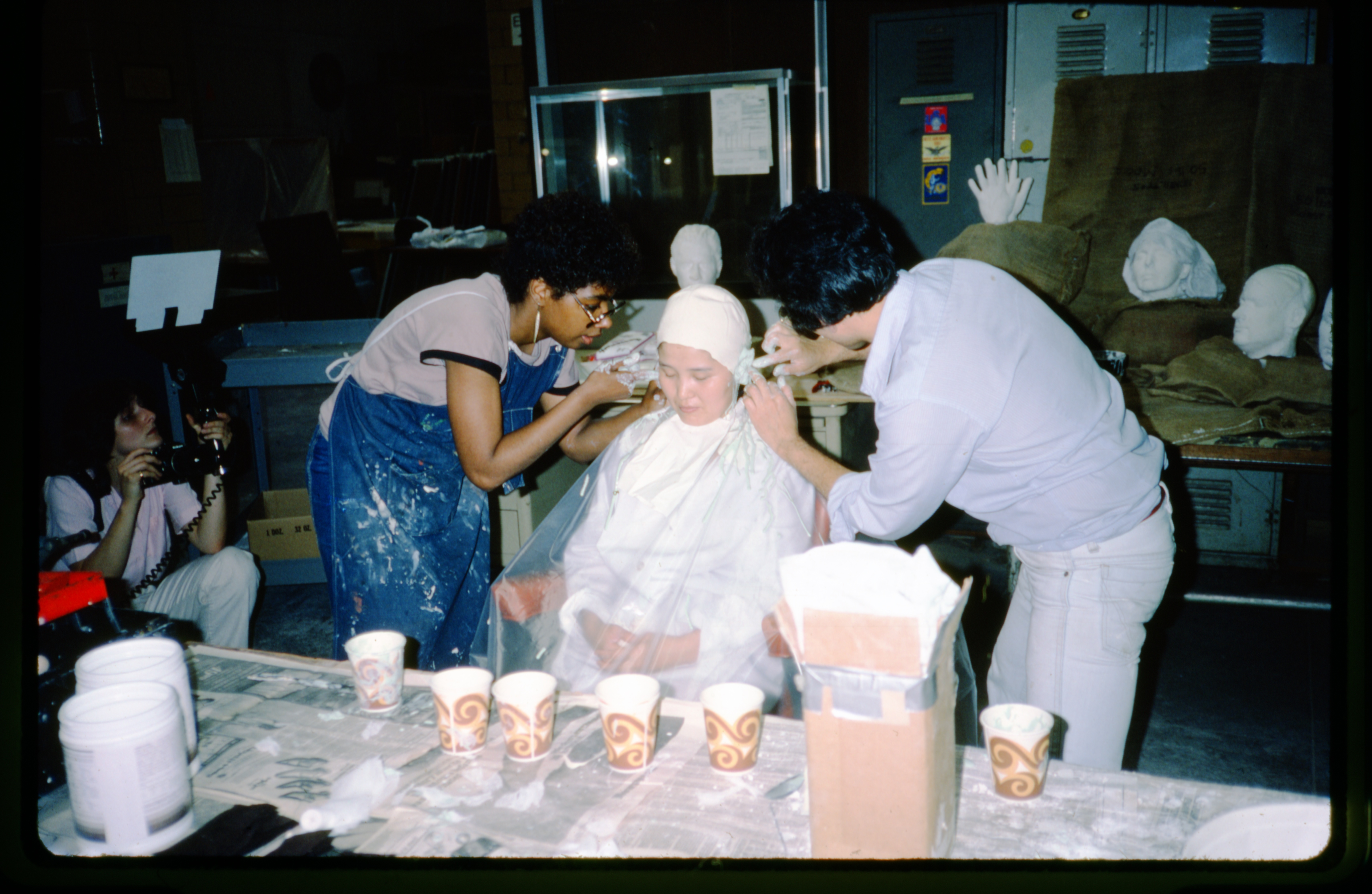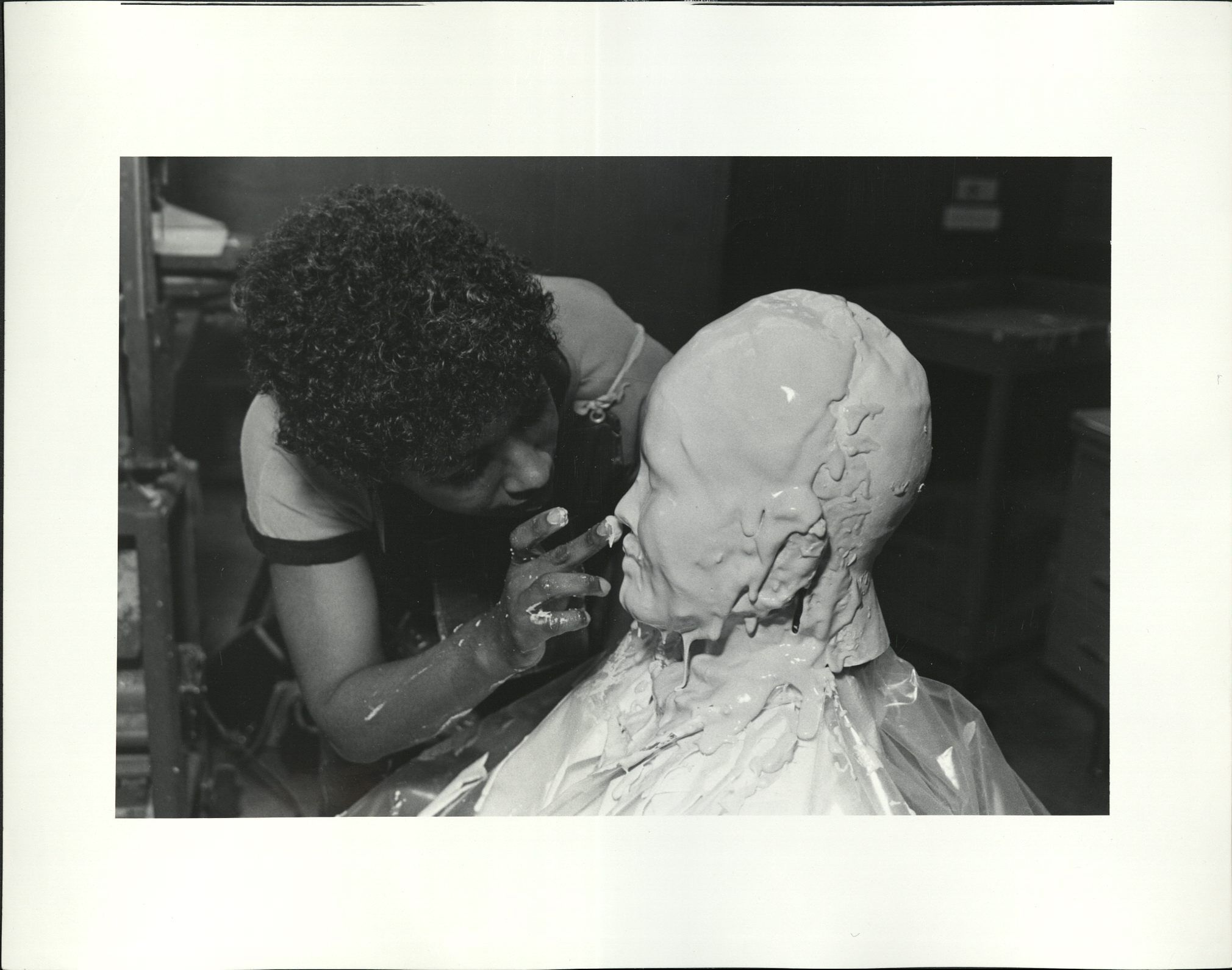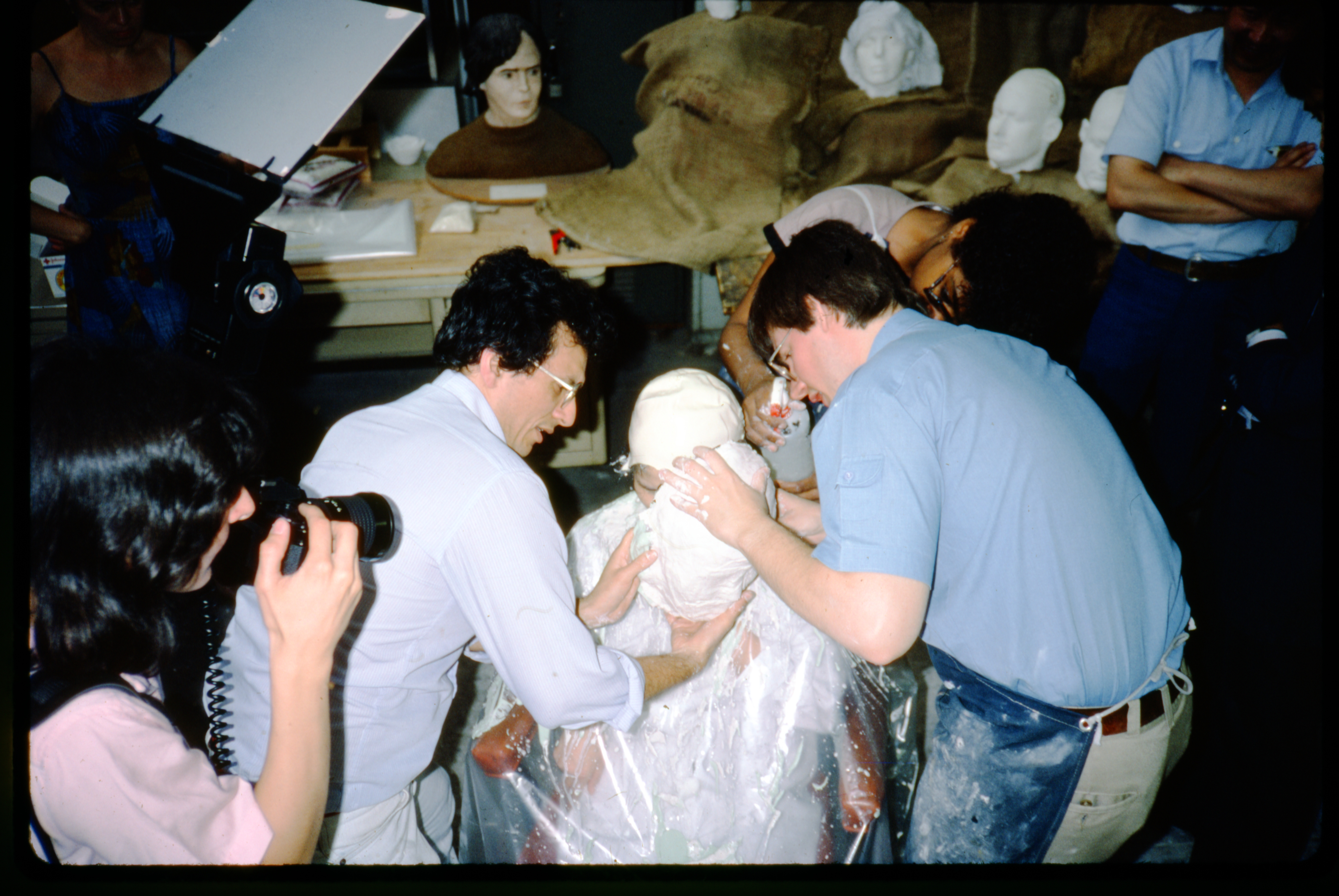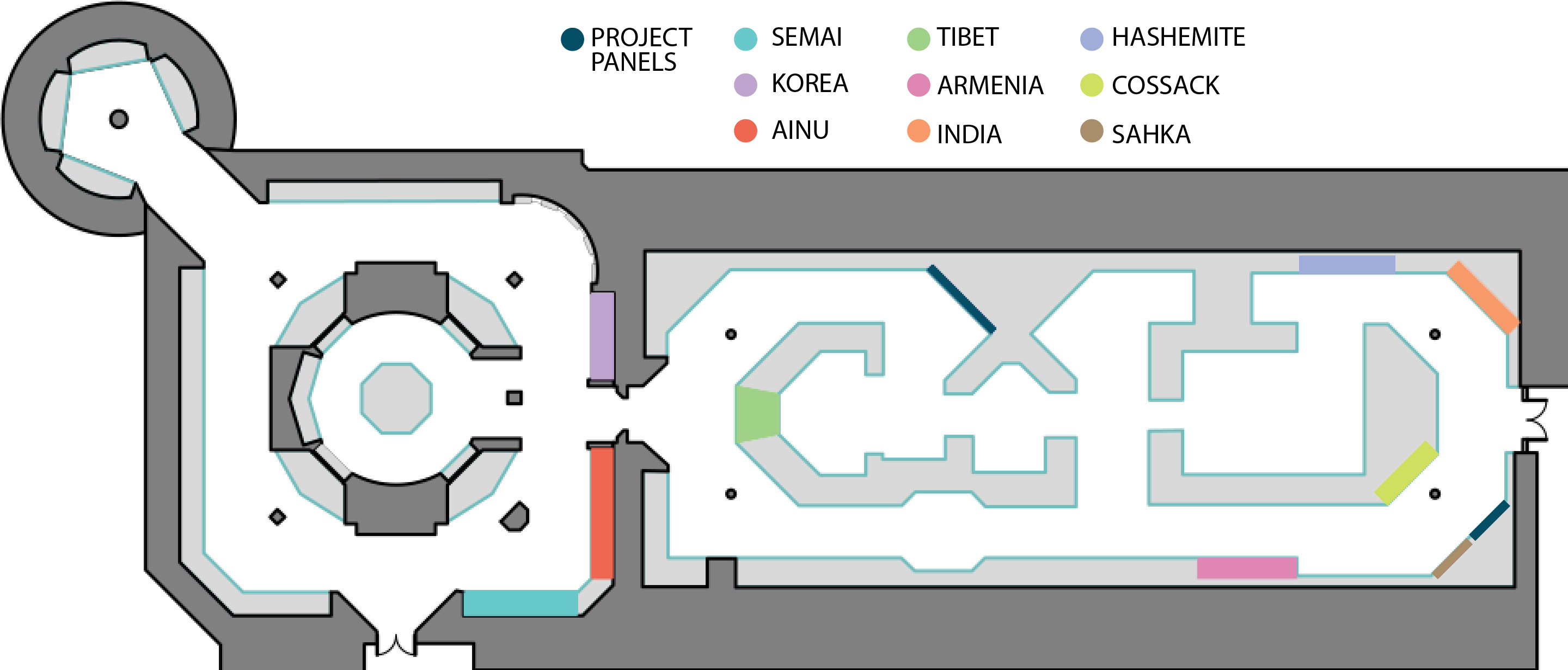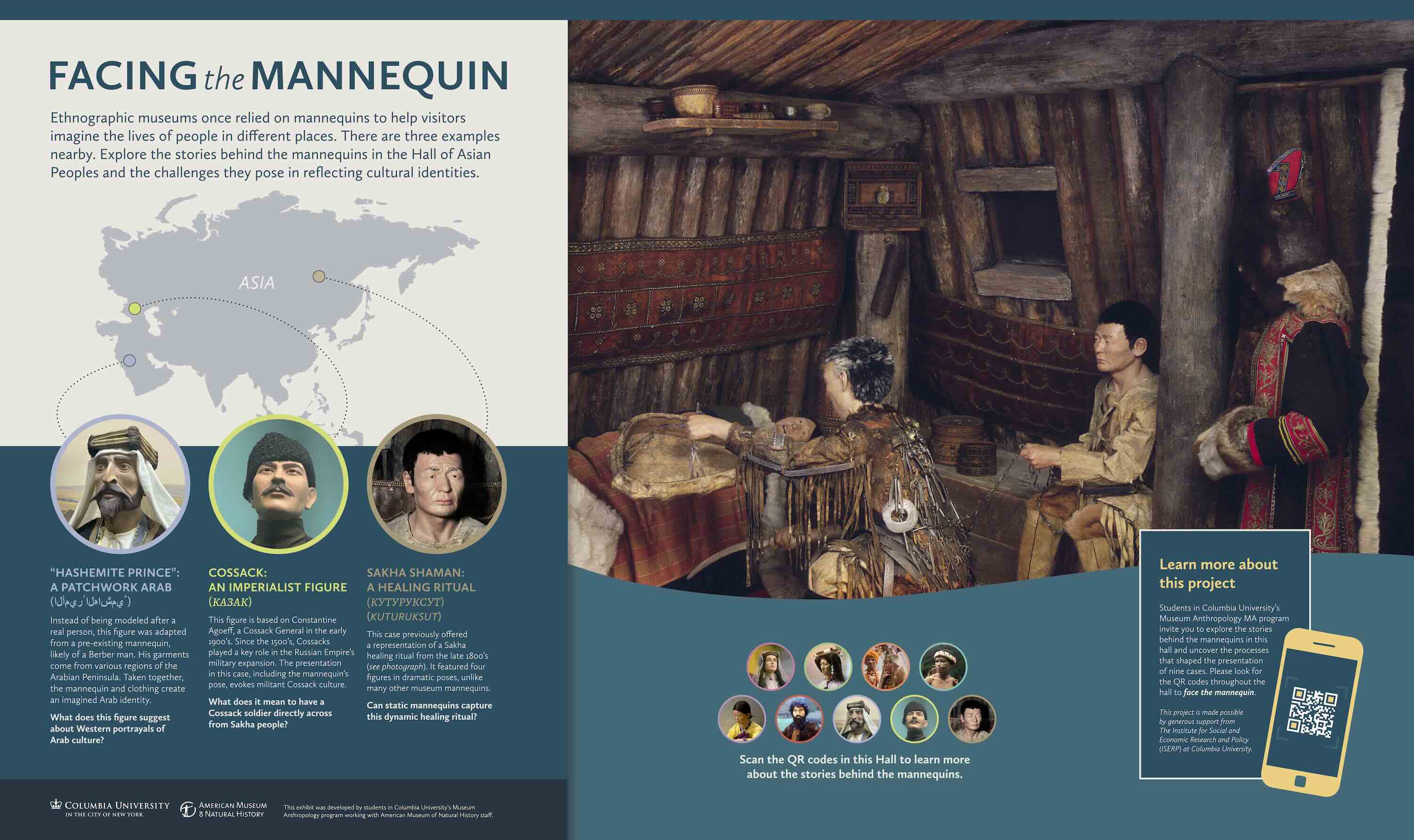FACING the MANNEQUIN
Digital companion to the American Museum of Natural History exhibit, 2022–2024
About this project
Historically, ethnographic museums have used mannequins to teach their visitors about cultures from around the world. But today most museums find other ways to do this same work. Many think that mannequins cannot represent an entire race, culture or group of people; others are concerned that mannequins freeze cultures in time.
Dive into the unique backstories behind some of the mannequins still used in the dioramas in the Gardner D. Stout Hall of Asian Peoples, which opened in 1980 at the American Museum of Natural History. Find out how the dioramas were designed and made and some of the problems they present, as you face the mannequin.
Tap to discover the backstories …
What is lifecasting?
The Lifecasting Process in the American Museum of Natural History’s Studio, 1984
AMNH, 1984
Some mannequins are modeled after real individuals using a process called lifecasting. The images above show the steps AMNH’s Department of Exhibition and Graphics used in 1984 to lifecast Chong Hwa Lim and create a mannequin portraying an elegant Korean woman.
To fabricate a mold of her head and face, AMNH technicians first moisturized Mrs. Lim’s face and covered her head with a rubber cap. They then spread a molding material on top. Technicians wrapped her head in bandages to hold the material in place. Lim had to remain very still for up to 30 minutes while the mold dried. To Lim, everything was dark and muffled inside the drying mold. Once dry, technicians carefully removed the mold. From this mold, a cast of her head was made. A museum artist then sculpted refinements on the cast and painted it realistically, transforming a cast into a lifelike mannequin head. See the Ainu and Semai sections for other techniques.
As demonstrated in the photos above, models sometimes volunteered to help AMNH create realistic mannequins for ethnographic exhibits.
Is this a mannequin?
Mannequins come in many forms. Cast your vote on whether you think the photograph depicts a mannequin.
How can mannequins be problematic?
The use of mannequins in ethnographic dioramas has been critiqued for many years. While curators work to design dioramas which depict cultures accurately, dioramas cannot show the breadth of a culture. Critics also point out that dioramas freeze communities in time and often do not represent peoples as they understand themselves; instead, they can create stereotypes.
How do you view the use of ethnographic mannequins?
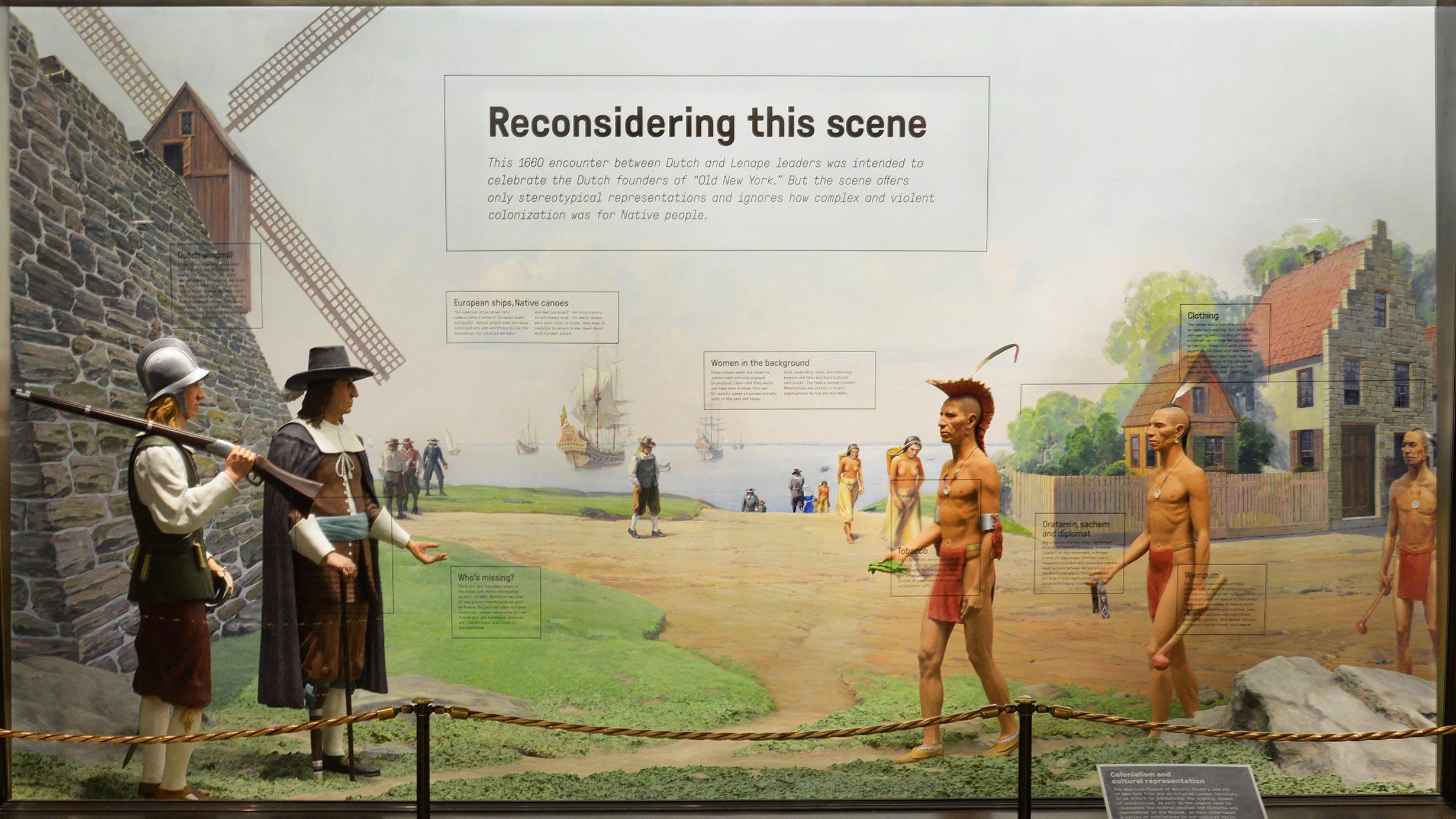
An intervention rethinking the 1939 Old New York diorama adds further context and increases the accuracy of the scene.
[Photo credit] R. Mickens/AMNH.
AMNH’s Old New York diorama was designed in 1939 to depict a meeting between Dutch settlers and the Lenape in 1666. However, it represented cliched understandings of the Lenape people and ignored the violence and complexity of colonialism.
Recently, AMNH responded to criticisms of its Old New York diorama. The museum applied texts directly onto the diorama’s glass addressing inaccuracies in the scene and inviting visitors to reconsider the stories told by dioramas.
How does this diorama influence your perception of power dynamics between European settlers and Indigenous peoples?
How effectively do the mannequins in the Hall of Asian Peoples represent their respective cultures?
The Exhibition
The MA in Museum Anthropology, offered jointly by the Columbia Department of Anthropology and the American Museum of Natural History (AMNH), combines the strengths of a premier academic department of anthropology and an innovative museum department whose collections and archives span the history and geographic range of the discipline.
Students enrolled in the program for 2021–2022 and 2023-2023 curated and designed Facing the Mannequin, working with the professors David Harvey, Laurel Kendall and Ciné Ostrow. Students were introduced to exhibition design, from concept through production, by AMNH staff and other museum professionals.
To learn more about the Museum Anthropology program, click here.
Resources
American Museum of Natural History, Division of Anthropology Archives
American Museum of Natural History, Library Special Collections
American Museum of Natural History, The Hall of Asian Peoples Educator Guide.
Carneiro, Robert L. 2019. The Making of an Exhibit Hall: Bringing to Life Amazonian Indian Culture. Bloomington: IN: Authorhouse.
Cooks, Bridget R. and Jennifer J. Wagelie. 2021. Mannequins in Museums: Power and Resistance on Display. London and New York: Routledge.
Étienne, Noémie. 2021. The Art of the Anthropological diorama: Franz Boas, Arthur C. Parker, and Constructing Authenticity. Belin/Boston: De Gruyter
Mori, Masahiro. 2012. “The Uncanny Valley.” IEEE Spectrum.
Sandberg, Mark B. 2003. Living Pictures, Missing Persons: Mannequins, Museums, and Modernity. Princeton: Princeton University Press.
Thanks to:
Curation, Writing, Exhibit Design
2023-2024
Susan Anthony
Isabella Corder
Katherine Dantzler
Olivia Dodd
Jin Han
Zahra Khan
Andres Krikorian
Jeong Hwa Lee
Ilia Lin
Shadi Omar
Anni Qu
2022-2023
Omar AlAttas
Brooklyn Benway
Karina Elizabeth Ceron
Mary Justine Erickson
Teresa Figueiras
Jeanwon Kim
Sooah Kwak
Zoe Lee
Chuyan Li
Yannick Pui Yu Ma
Kristie A. Schlauraff
Mika Tal
Valencia Tong
2021-2022
Annelisea Marie Brand
Kathryn Bruyneel
Emily Cai
Megan E. Carden
Wenqi Chen
Anisha Dias Bandaranaike
Emily Gomez
Barrett Hellmann
Chelsea Gabriela Hernandez-Garcia
Olivia Nicole Hwang
Tianyi Jiang
Katherine Katzer
Sophie Loyd
Qingquan Ma
Kara S. Pusateri
Symphony Andrea Scott
Sophia Sze Nga So
Kelsey Jane Talbot
Ava Valentino
Mingxia Yuan
Gennie Xiaojing Zhang
Lujia Zhang
Cece Qian Zhang
Professors
Laurel Kendall, Division of Anthropology and Curator, Asian Ethnographic Collections, AMNH. Adjunct Professor, Columbia University
Ciné Ostrow, Senior Exhibit Designer, AMNH
David Harvey, Adjunct Professor, Columbia University. Former Senior Vice President of Exhibition, AMNH
Editor
Allison Hollinger, Senior Exhibit Researcher & Coordinator, AMNH
Exhibit Graphic Design
Jennifer Dillon
Web
Brett Peterson, Director of Media and Interactives, AMNH
An-Kai Cheng
AMNH Division of Anthropology
John Hansen, Collections Manager
Barry Landua, Systems Manager and Manager of Digital Imaging
Kristin Mable, Anthropology Archivist
Katherine Skaggs, Senior Scientific Specialist
Laila Williamson, Associate, Division of Anthropology
AMNH Library
Rebecca Morgan, Special Collections Archivist
Gregory Ramul, Special Collections Librarian
Joel Sweimler, Educator Emeritus, Exhibition Specialist
AMNH Exhibition
Lauri Halderman, Vice President of Exhibition
Melissa Posen, Senior Director of Exhibition and Exhibition Capital Projects
Sasha Nemecek, Director of Exhibition Interpretation
José Ramos, Graphics Supervisor
Columbia University
Marilyn Astwood, Graduate Secretary, Department of Anthropology
Brian Boyd, Director of Museum Anthropology
Michael Chin, Administrative Assistant, Department of Anthropology
Zoe Crossland, Professor of Anthropology and Director, Center for Archaeology
Jeanne N. Roche, Director of Academic Administration & Finance, Department of Anthropology
David Scott, Ruth and William Lubic Professor and Chair, Department of Anthropology
Garen Tchopourian, Web Developer, Faculty of Arts and Sciences
Special thanks to
Eliot Goldfinger
Dr. Clare Harris
Dr. Doranne Jacobson
Anahid Ordjanian
Arman Susan Ordjanian Elliott
Dr. Shimpei Ota
Moira Sullivan Page
Eugene Hannah Park
Young-kyu Park
Ivan Schwartz, Studio EIS
This project was made possible with the generous support of the Columbia University Department of Anthropology and in-kind support by the American Museum of Natural History.

